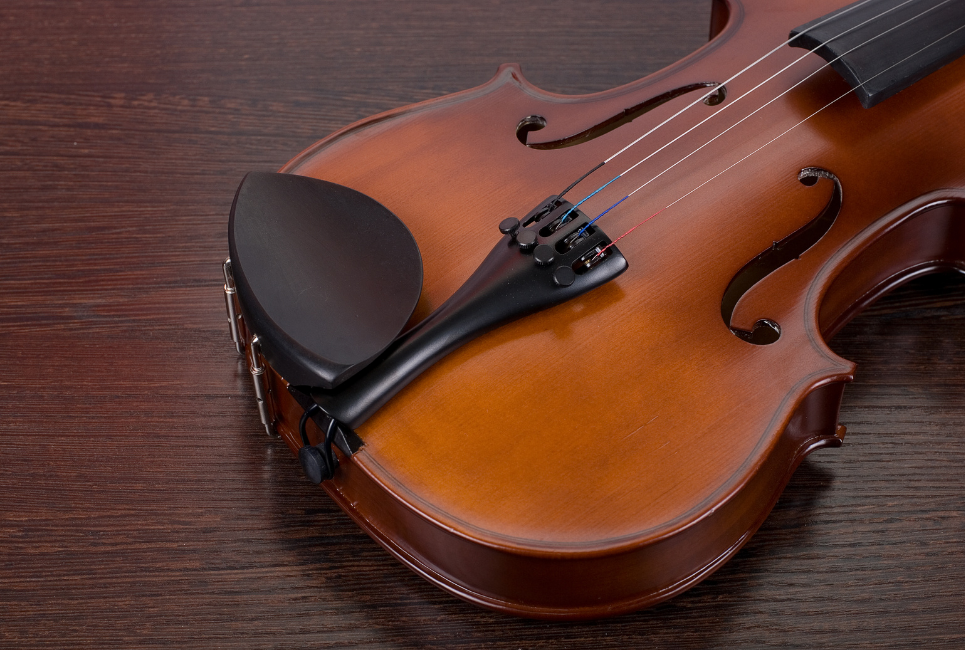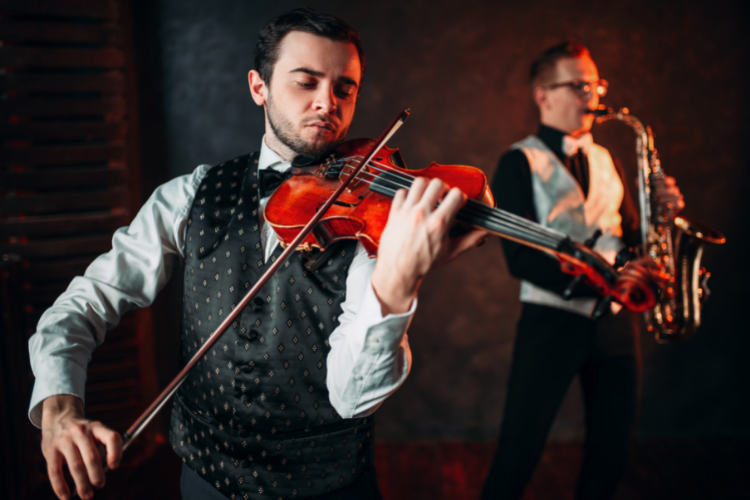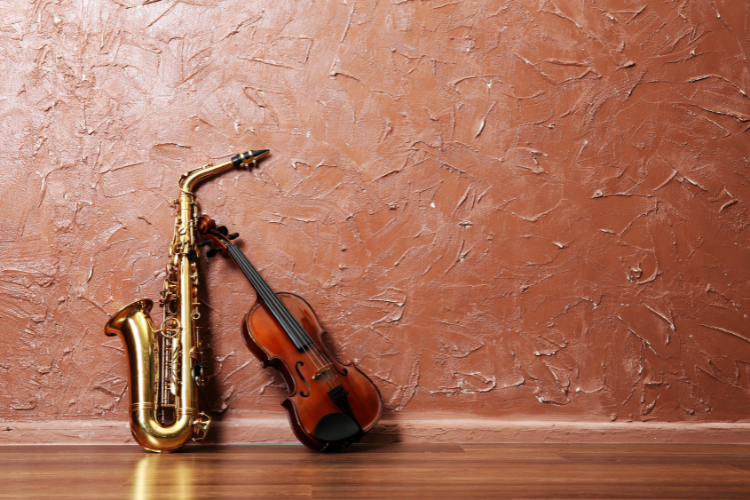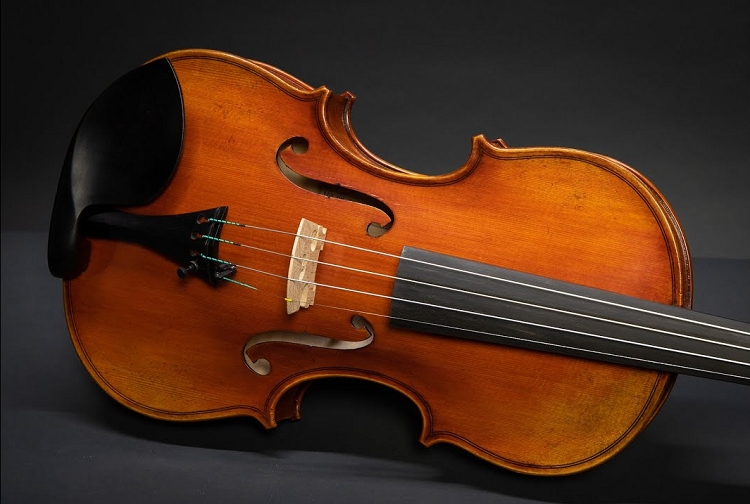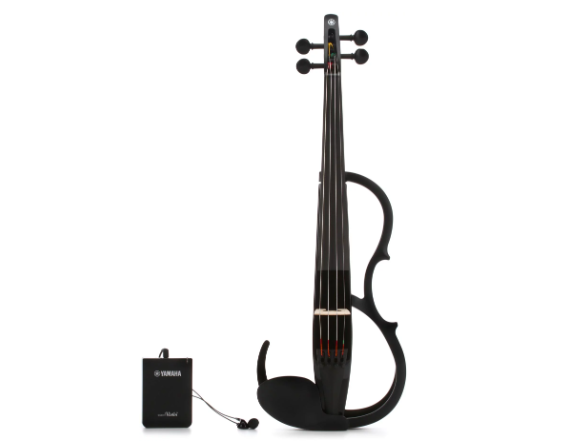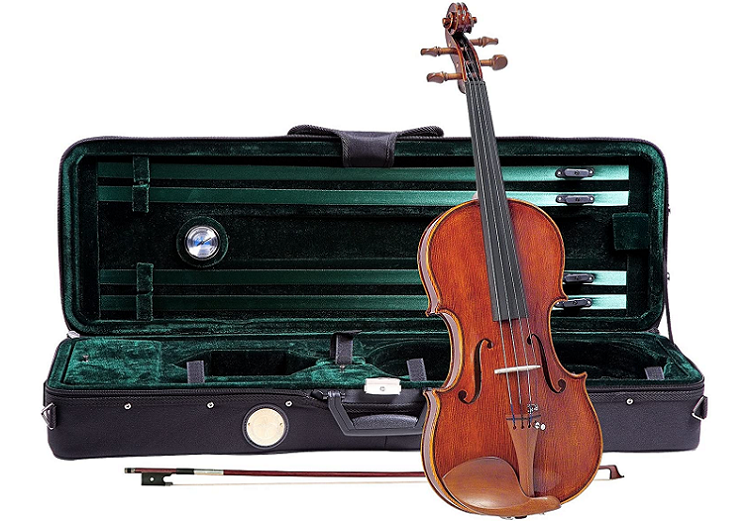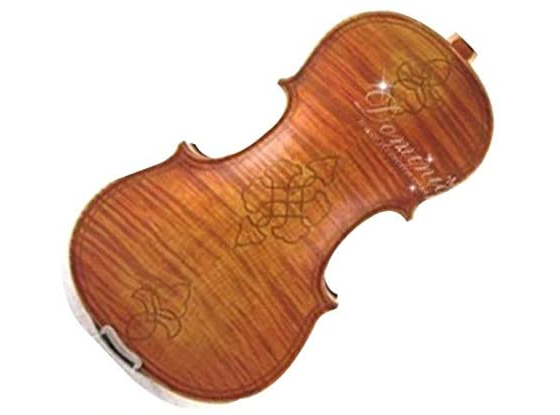- How To Find The Best Jazz Violin - April 26, 2022
- Best Eastman Violins Brand Guide - April 11, 2022
- Best Stentor Violins Brand Guide: Which Stentor Violin To Buy - April 3, 2022
Having both a classical background and a passion for jazz, I will help you, through this article, find the best jazz violin.
If you are new to the jazz world, deciding whether to use your current instrument or buy a new one might be challenging. This is because the approach to playing jazz violin, which I’ll also cover, is slightly different.
My Bottom Line Up-Front: Finding a good jazz violin is connected to developing your feel for the genre as much as to the violins’ specs. Typically, you want to look for quality tonewood and superb playability as you would for any regular violin.
A good jazz violin is your primary source of inspiration when improvising. If you’re switching from a classical background to jazz, feeling conformance with your instrument is crucial. The electric violin also could be your best alternative if you are a regular performer.
I have also added some of what I think are the best jazz violin for all player levels and needs. I won’t be reviewing them in detail; however, you will know what to look for when searching for the best jazz violin.
My Top Picks at a Glance
- Albert Nebel Series+ VL601+ – Best Acoustic Electric violin
Even though most acoustic-electric violins do not compare tone-wise to a hand-carved aged acoustic, the VL601+ is a good example of the best of both worlds. The main advantage of this violin, besides the superb tone, is the flexibility of plugging in a jack on any jazz stage and having your violin stand out.
- Yamaha Silent Series YSV104 Electric Violin – Best For Practising
If you want to practice your jazz improvising without bothering anyone, a Silent violin is the best choice. On the YSV104 you can just plug in your headphones, play the backing tracks and practice silently. Just plug in the jack on an Amplifier or PA system for performing.
- Cremona SV-1260 Maestro First violin Outfit – Best Affordable Violin
The SV-1260 is an excellent choice for the intermediate player starting out on jazz violin. It’s built with quality tonewood, and the tone far exceeded the expectations for a violin at this price. You can also bring it to rehearsal and your first shows and achieve an excellent full sound.
- D Z Strad Violin Gasparo da Salo – Best Tone & quality
Advanced classical musicians who start playing jazz violin need an instrument worthy of their skills. The Gasparo da Salo is a violin worthy of the best with its loud, full tone, responsiveness, and refined quality. It’s expensive, yet not as much as to scare a working musician.
The Role of the Violin in Jazz
Jazz violin origins date back to early 1900s New Orleans. Its role as a lead instrument in improvising solo lines has evolved much, and some of the best violin players of all time have been or are part of jazz bands.
The violin has been part of Jazz since its beginnings. Even though it might not fit every jazz genre as a lead instrument, it also serves as part of the orchestra background for many Jazz classics. Gypsy Jazz and the more modern Jazz Fusion are two genres that use the violins’ full potential.
The biggest problem early jazz violin faced was the lack of amplification. With the initial adaptation of pickups on violins in the mid 1903s, the violins’ role as a lead instrument only grew bigger.
Names like Stuff Smith, Jean-Lun Ponty, Stephane Grappelli, Regina Carter, and many others are some of the most well-known jazz violinists respected in classical and modern music.
Other stringed instruments like the Cello are also widely used in modern jazz.
What Makes a Good Jazz Violin?
Quality aged tonewoods and a full and loud rich tone are what you should look for in a good jazz violin.
Considering that you will most likely be the lead instrument in a Jazz band, you should look for a violin that is as responsive as possible and makes it easy to improvise.
Good tone and playability are crucial for giving you ideas and inspiration. A very comfortable violin that gives you pleasure to play will help you come up with better lines and feel more relaxed when on stage.
It was essential for the violin to be loud in the older times as there was no amplification. Today you can either run your acoustic violin through a mic or opt for an electric violin or silent violin.
Regarding price, I would not suggest you start jazz violin with a very cheap instrument. Even if you have only learned the basics of violin and are still refining your technique, going for a slightly costlier instrument for solo playing would be a good idea.
I specifically chose affordable violins and did not go for anything above 2000$. If you go higher than that, every violin can be a great jazz violin in the right hands.
How to Learn Jazz Violin if you’re Classically Trained?
If you are already classically trained, most of your training should focus on improvising. When you start learning jazz violin, The most significant challenge you face is making your improvising sound less like an exercise and more like music.
Being an intermediate/advanced player, you most likely have the chops, technique, a well-refined ear, and solid knowledge of music theory. On the downside, consistently being used to execute a written piece doesn’t leave space for becoming a better improviser.
If your understanding of scales and arpeggios is solid, but you lack a jazz vocabulary, you might be too dependent on them and sound too robotic.
Everything you need to learn is hidden in records. The biggest tip I can give you is to listen to as many jazz violin records as possible and transcribe them. Transcribing violin solos is your
best tool. You don’t even have to write the piece if you don’t want to. Listen and execute by ear and take from the solos what you like.
Improvising in front of an audience requires growing your confidence and setting yourself free from the fear of judgment and wrong notes. For everyone, the process of achieving their creative peak and even what is commonly called ‘the zone’ – the moment you just play and don’t think, is different.
Another concept that you have familiarised yourself with is the jazz swing and the jazz feel. Practicing with a metronome with help, but not in the academic way of sticking to the beat. Try to go around the beat like Jazz musicians usually do and play with a rhythm section as often as possible.
A good jazz violinist is also a good band member that follows the band as much as he leads them. Play with as many people as possible, and you will both improve each other.
Albert Nebel Series+ VL601+
This Eastman violin is an acoustic-electric violin I particularly like as it will serve as the best bridge for intermediate/advanced classical musicians to jazz.
As a violin I have reviewed before, I can assure you it will satisfy every kind of player, even those who have never played an electric violin before.
The jackhole is hidden well, and the violin feels & looks like an aged model. The hand-carving with traditional german craftsmanship methods and quality Spruce and Ebony contribute to that.
It sounds acoustically just as good as it sounds plugged in and gives the flexibility to use it on any stage as a lead instrument or as part of a jazz orchestra. The pickup system is also very responsive and eliminates feedback.
The only downside of this violin is that it does not have tone and volume control and is expensive.
Albert Nebel Series+ VL601+ Pros
- Very responsive pickup system
- Excellent tone and playability
- Refined look and finish
Albert Nebel Series+ VL601+ Cons
- No tone and volume control
Yamaha Silent Series YSV104 Electric Violin
A silent violin is your best option for practicing your jazz improvisation skills at home. Just plug in your headphones and jam along with the backing tracks. The YSV104 does not only do that but also delivers when used on stage.
Electric violins come in all shapes and forms, some of which are not well received. I like this violin because it retains the traditional shape, making it more acceptable for most players.
This Yamaha Violin is an easy switchover from your standard violin.
The violin imitates the rich overtones of tonewood well and lets you shape the sound on stage with an onboard reverb. If applied right, some reverb can completely change how your violin sits in the mix.
The downside is that it’s not fit for a classical situation or live show where you need an acoustic violin. It’s ideal for a second violin you keep for practicing or specific performances.
Yamaha Silent Series YSV104 Electric Violin Pros
- Great acoustic rich violin tone
- Practice at will without disturbing anyone
- No feedback
- Gives your control over the sound with the onboard reverb.
- Lightweight and comfortable to play
Yamaha Silent Series YSV104 Electric Violin Cons
- It takes some time to get used to it
- You are limited to only playing it with headphones or plugged in an amplifier
Cremona SV-1260 Maestro First violin Outfit
This violin is the affordable option you can start your jazz violin journey. Even though it’s not expensive, it ticks the box for a balanced tone and great playability.
It’s hand-carved and built with great care, just as premium violins are. The difference between this one and a 1000$ violin is the tonewood quality. The tonewoods used on the Cremona still make for an excellent rich tone, yet not as deep and satisfying for a professional.
What I like about this violin that you might appreciate also is the playability which matches the more expensive model. You play your first jazz gigs with violin with great results.
The only downside is that you should be ready to replace it after a few years of playing.
Cremona SV-1260 Maestro First violin Outfit Pros
- Good tone and decent tonewoods
- Excellent playability and built quality
- Very affordable for all player levels
Cremona SV-1260 Maestro First violin Outfit Cons
- Not fit for as advanced jazz player main violin
D Z Strad Violin Gasparo da Salo
On the high-end side, the Gasparo da Salo from D Z Strad is an extraordinary instrument worthy of advanced jazz violinists. This is a refined hand-carved violin; as such, it’s costly.
I added this violin to the list as an example of a high-quality violin in different sizes. If you or your child are performing at high levels, this Gasparo da Salo model could be a great choice.
The tone is impressive and will serve as your best inspiration when improvising. The full, rich tone worthy is of any big stage or orchestra. The violin comes with two excellent bows and a hard case, adding value to your purchase.
If you are purchasing a smaller size, you might need to change it when the child’s body size does. For adults, the price is the only thing that could stop you from purchasing it or if you want the stage freedom of an electric violin.
D Z Strad Violin Gasparo da Salo Pros
- Aged tonewoods and superb tone
- Great playability and details
- Fit as the first violin for an advanced jazz player
D Z Strad Violin Gasparo da Salo Cons
- You will need to mic the violin for most live performances
FAQs
Answer: Joe Venuti (1903–78) is considered the father of jazz violin. Other big names of the era are Eddie South Stuff Smith, Claude “Fiddler” Williams, etc.
Answer: You or the violin teacher should make the body measurement for children before purchasing a violin. You can learn more about violin sizes and how to do your measurement here.
Answer: Music schools, second-hand shops, eBay, and Amazon are some of the many alternatives
Final Thoughts on How to Find the Best Jazz Violins
Once you become a better jazz violinist and develop a feel of the genre., the concept of what makes a good jazz violin will become much more precise. Ultimately a good jazz violin is any quality instrument in the right hands.
However, there are some specific criteria to consider when choosing the best jazz violin. Depending on your level of playing and the setting you perform, a good jazz violin will help you sound and improvise better.
Looking for more interesting readings? Check out:

